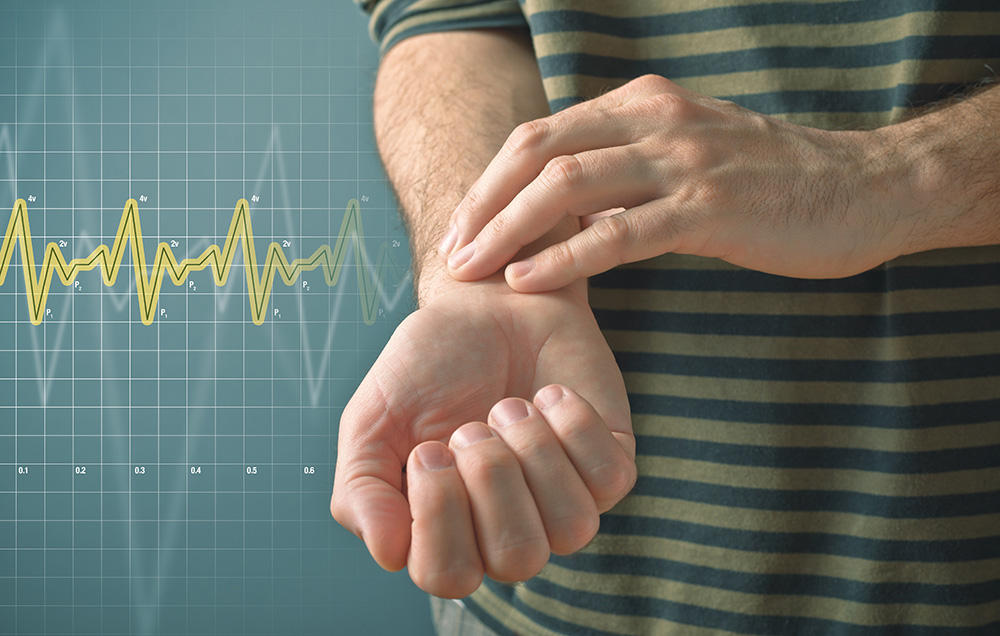Why It’s Important To Pay Attention To Your Resting Heart Rate
It’s a simple, free approach to measure your overall fitness progression.

stevanovicigor/Getty Images
Beverly asks: I am just starting to run, and I’d like to know if I really need to purchase a GPS watch, heart rate monitor, or any of the other running devices I see advertised? I feel technologically challenged, and these things just seem intimidating and overwhelming. Do they really do that much to show me how much I might be improving?
Running is a very simple sport. For me, the simplicity is one of its most appealing qualities. Getting out the door and moving is the important part, especially for a beginner. Using measurement devices is a choice, not a requirement.
Any item you choose to use during your runs, from a simple stopwatch to a complex GPS, should enhance your running experience—not detract from it. The many high-tech gadgets that have come about in recent years provide data that some runners find informative, fun, and even motivating. If that helps get you out the door for a run, then they are worth the investment.
On the other hand, “running naked” (going without technology) is totally fine. There is no need to use technology unless you choose to do so. (And keep in mind that you can change your mind and experiment at any time.)
But for now, there is a great low-tech alternative for measuring your fitness and progress. It’s simple, free, and provides some great data. It’s measuring your resting heart rate (RHR).
If you measure it each morning, you will capture one of the most important body metrics of all. And since you are just starting out, this is the perfect time to adopt this habit, as you can monitor some important changes along your fitness journey. All you need to do is learn how to take your pulse.
Your RHR provides an insight into your cardiovascular health. Heart rate refers to the number of times your heart beats in one minute, and the number of beats indicates how hard the heart is working to circulate blood through the body. In general, a low heart rate signifies your ticker is performing its job with relative ease. A higher rate means it is working harder to circulate blood and, in general, indicates a lower health and fitness level.
Heart rate is influenced by many factors like age, weight, medications, mood, sleep, time of day, caffeine, and so on. Because heart rate is influenced by so many of these variables, it’s best to measure it first thing in the morning for a more accurate insight.
This means before even getting out of bed. Allow yourself a minute or two to recover from the shock of the alarm clock going off, but then, count your pulse before your feet touch the ground.
The average adult has a RHR between 60 and 100 beats per minute (bpm), while an athlete often has a rate between 40 and 60 bpm. I’ve found that you can find your pulse most easily on the underneath side of your wrist, at the base of your thumb. Turn your arm over and using your first two fingers, gently feel for a pulse on your wrist. Once you find it, feel it’s rhythmic, regular beat.
Then, using a clock with a second hand or the timer on your phone, count the number of beats you feel for 30 seconds and multiply this number by two (or count your pulse for the full minute). Write down the date and the number of beats you counted each morning for the next several weeks. After several measurements, you will have established your baseline pulse, or what is your “norm.”
Why is this measurement important? In general, RHR declines when fitness improves, so since you are just beginning your training, measuring your RHR now will allow you to track your fitness journey.
Regular aerobic exercise improves the effectiveness and efficiency of the cardiovascular system. All of the physiological adaptations ease the workload on our heart, allowing it to reduce the number of times it beats. Most researchers agree that this adds years to our lives.
How long does it take to see a difference? This does vary, but in general, runners can see changes within eight weeks. A lot of this depends upon how consistent you are and how many days a week you are running. If you are consistent and running three to four days a week, you’ll definitely see some decline in RHR within a couple months.
Once you know your average RHR, take note when it seems vastly different. For example, if your RHR is 10 beats higher one morning, it’s a clue that something might be going on.
Are you getting sick? Is it stress? Lack of sleep? Over training? This information gives you the opportunity to skip or alter a run, knowing you are not at your best. (If you do want to give some new tech a try, some advanced GPS watches are very helpful in monitoring your daily heart rate.)
On the other hand, when you see your RHR decline, you will know you are improving your health and fitness.
Story Credit: http://www.runnersworld.com/health/why-its-important-to-pay-attention-to-your-resting-heart-rate


